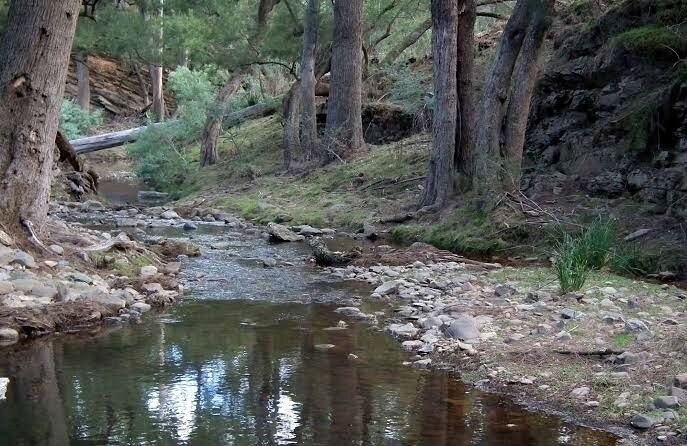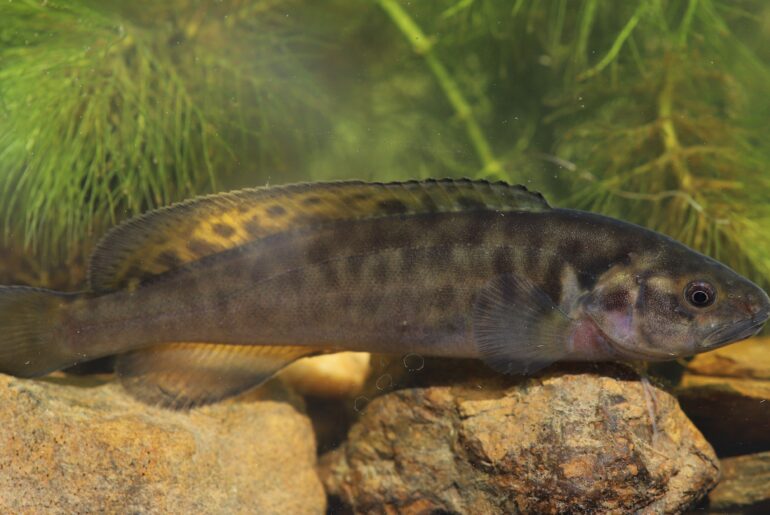A peacefully grazing kangaroo and the quiet, isolated section of river, deep within rugged country in central west New South Wales mask the fact that this spot is a fortress — a strategic stronghold in a battle to the death. The name of the spot — the Retreat River — says it all. The site is an important haven for the endangered Macquarie perch because it is located above a set of waterfalls that predator fish, the introduced redfin perch, can not swim up. Scientists hope this sanctuary will allow the Macquarie perch to be saved from destruction and one day spread across the southern Murray Darling Basin, as it did decades ago.
“So it’s sort of a refuge population, kind of like a Noah’s Ark we’re trying to establish, to try and save this species,”
said Luke Pearce of NSW Department of Primary Industries (DPI) Fisheries, who is working on the Macquarie perch refuge project.

Once widespread, now close to extinction
The Macquarie perch, a medium-sized freshwater fish, was historically found in the Lachlan, Murray and Murrumbidgee rivers as well as the Macquarie from which it got its name. However, due largely to predation by redfin perch and death from a virus carried by the introduced species, there are no longer any Macquarie perch in the Macquarie catchment of NSW. Only five populations of Macquarie perch remain, including near Oberon, NSW, in the Abercrombie River, which is part of the Lachlan catchment.
“Each of those are a fairly small populations and isolated and disconnected from each other so they’re really in danger of becoming locally extinct, as they have done in many other areas,” Mr Pearce said.
Gathering population for the ‘ark’
In 2010, with redfin showing no signs of retreating their advance, scientists drew up a battle plan to save the Macquarie perch. They gathered specimens from the Abercrombie River and took them to the DPI’s Narrandera Fisheries Centre in the NSW Riverina where they formed the basis of a captive breeding program. After the Retreat River, upstream from the Abercrombie, was identified as a “safe spot”, fingerlings were released there in 2011 and 2012. Now, five years on, researchers have once more returned to the river to see if their ark idea — taking fish from one area and putting them in a safe spot for the future — would sink or float.
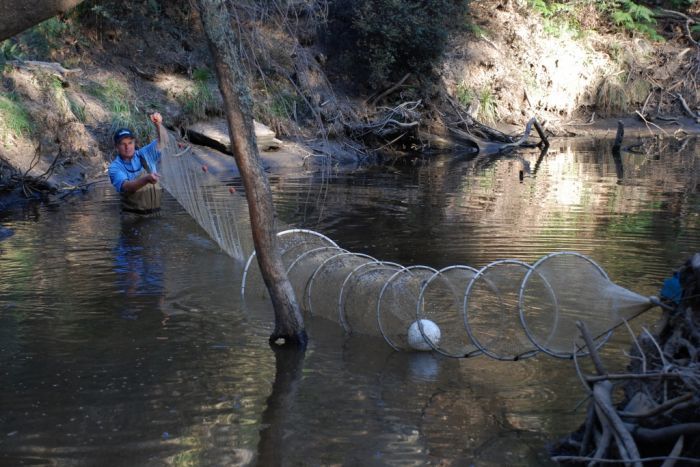
Fyke nets and electrofishing
The DPI research team are using a range of sampling equipment to see if the 2011 and 2012 fingerlings have spawned another generation and started to re-populate the sanctuary site. They use an electrofisher — an electronic backpack that sends out an electric current via a ‘tail’ and a pole, stunning the fish in a certain radius so researchers can catch them and weigh, measure and record them before they are released. Another survey aid is a type of cylindrical net called a fyke net which allows other water creatures such as water rats and platypi to pass through safely during the sampling process.
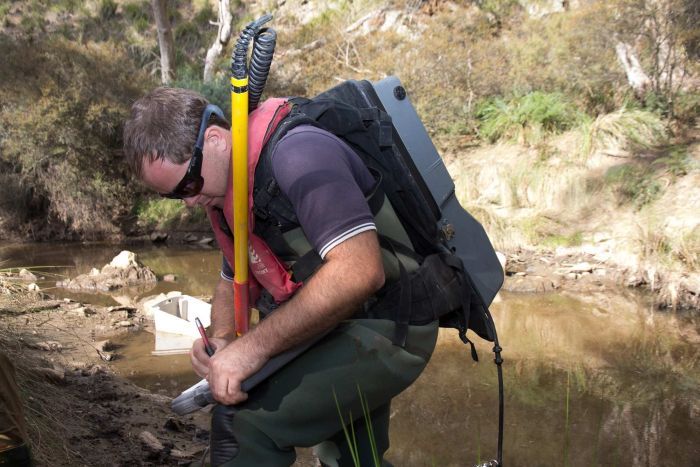
Some success but not all the way
After three days of sampling and camping out on the Retreat River this week, the scientists, along with supportive local fishers, found 15 Macquarie perch — the largest of which was 35 centimetres long — but none of the next generation.
“Unfortunately we did not capture any juvenile fish, so [we] still no evidence of natural recruitment but, given the current conditions of the river and how low it is, I guess that is not surprising.
While it is disappointing, they are pleased the species is surviving well and the isolated spot is a good sanctuary for them.
“It’s probably one of the most pristine spots of water in this part of the world,” Mr Pearce said.
He said if the Noah’s Ark concept works, it could have far-reaching implications for other fish populations in NSW and Australia.
Battle continues with anglers on board
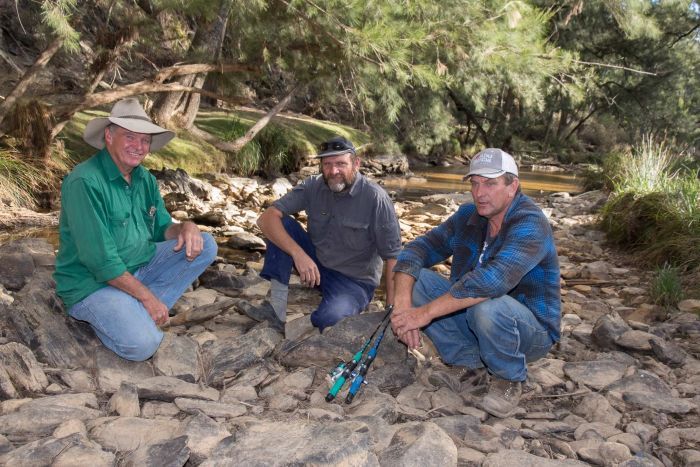
The battle to preserve this species and win the war against redfin will continue and the scientists are buoyed by support the project has received from local fishers, whose fishing fees go into a body helping fund the research. The local fishers, who are members of volunteer native fish restocking group, the Central Acclimatisation Society (CAS), have also provided generations of knowledge about the Retreat River site and its fish. But the anglers are not helping the re-population project in order to be able to able to reel in a Macquarie perch or two, because being an endangered fish, it is illegal to catch them. However Oberon CAS member Peter Byrom, who can remember fishing Macquarie perch when they were prevalent in the 1970s, said being fishermen, they just liked fish.
“So if there are fish out there and they’re endangered or in problems or something like that, we’re keen to make sure they survive,” Mr Byrom said.
“We don’t want to get rid of all the fish and catch them; we want to make sure there’s always fish about.”
The Macquarie perch refuge project is a collaboration between NSW DPI Fisheries, Local Lands Services, the Recreational Fishing Trust, NSW National Parks and the Central Acclimatisation Society.
For the story on the ABC Website: http://www.abc.net.au/news/2016-04-21/noahs-ark-for-fish-in-bid-to-save-endangered-native-perch/7344846
